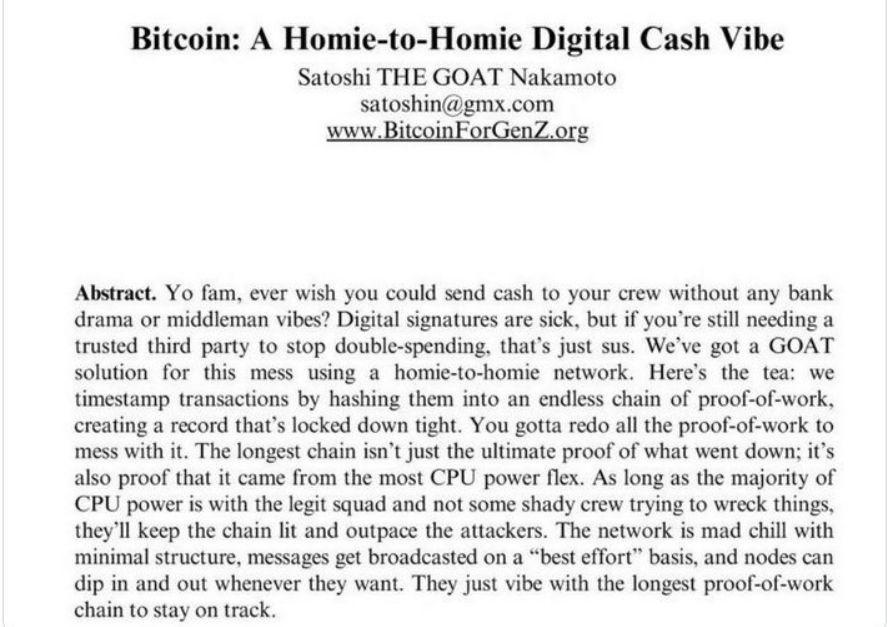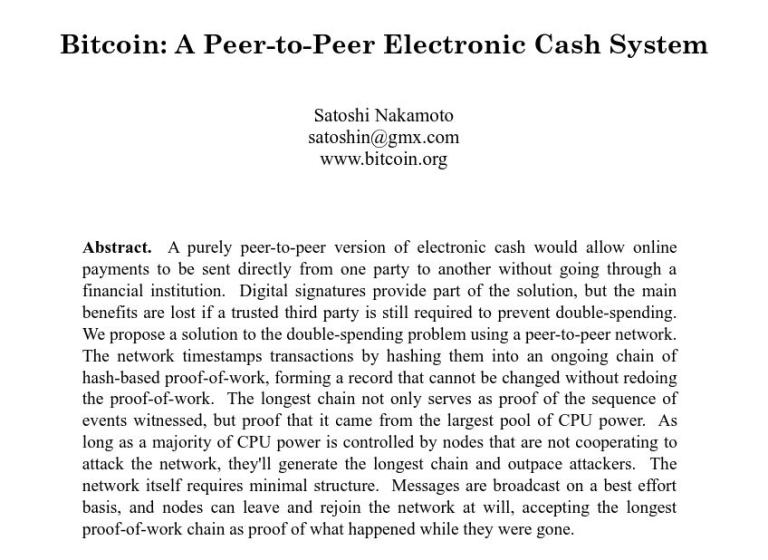The Bitcoin whitepaper, titled “Bitcoin: A Peer-to-Peer Electronic Cash System,” was published by an anonymous individual or group known as Satoshi Nakamoto on October 31, 2008. This groundbreaking document outlined the conceptual framework for Bitcoin, a decentralized digital currency that operates without a central authority. The whitepaper is crucial because it introduced a novel solution to long-standing issues in digital currency and set the foundation for the development of the entire cryptocurrency industry.
Which Problem Does the Bitcoin Whitepaper Solve?
The primary problem addressed by the Bitcoin whitepaper is the issue of trust in digital transactions. Before Bitcoin, digital currencies required a central authority to validate and record transactions, making them vulnerable to fraud, double-spending, and manipulation. The whitepaper proposed a decentralized network that allows secure, verifiable, and irreversible transactions without relying on a central entity. This innovation effectively eliminates the need for intermediaries, reducing transaction costs and enhancing financial inclusion.
Who Owns the Bitcoin Whitepaper?
The Bitcoin whitepaper is not owned by any individual or organization. It was published under the pseudonym Satoshi Nakamoto, whose true identity remains unknown. The whitepaper is freely available on the internet and is considered part of the public domain. Various organizations and websites host copies of the document, ensuring its accessibility to anyone interested in understanding the principles behind Bitcoin.
Key Points in the Bitcoin Whitepaper
- Decentralization: Traditional payment systems are inefficient; Bitcoin proposes a new system without intermediaries. It operates on a decentralized peer-to-peer network where transactions are validated by network participants (nodes) rather than a central authority.
- Blockchain Technology: The whitepaper introduced the concept of a blockchain, a public ledger where all transactions are recorded in chronological order. This ensures transparency and security.
- Proof-of-Work (PoW): To secure the network and validate transactions, Bitcoin uses a proof-of-work mechanism where miners solve complex mathematical problems. This process also regulates the issuance of new bitcoins.
- Double-Spending Solution: The whitepaper addressed the double-spending problem by ensuring that once a transaction is recorded on the blockchain, it cannot be altered or reversed.
- Fixed Supply: Bitcoin has a capped supply of 21 million coins, making it a deflationary asset. This fixed supply distinguishes it from traditional fiat currencies, which can be printed in unlimited quantities.
- Privacy: The system uses public-key cryptography and pseudonymous addresses to maintain user privacy.
- Incentive: Miners are rewarded with newly minted Bitcoins for creating new blocks.
Interesting Facts About the Bitcoin Whitepaper
- Publication Date: The Bitcoin whitepaper was released on October 31, 2008, coinciding with the global financial crisis, which underscored the need for an alternative financial system.
- Length and Simplicity: The whitepaper is remarkably concise, spanning just nine pages. Despite its brevity, it provides a comprehensive overview of the Bitcoin system.
- Influence: The whitepaper has inspired countless other cryptocurrencies and blockchain projects, making it one of the most influential documents in modern financial history.
- Anonymity of Satoshi Nakamoto: The identity of Satoshi Nakamoto, the author of the whitepaper, remains one of the biggest mysteries in the cryptocurrency world. Various theories exist, but none have been conclusively proven.
- First Block Mined: The first block of the Bitcoin blockchain, known as the Genesis Block, was mined by Satoshi Nakamoto on January 3, 2009. This block contained a cryptic message referencing the financial crisis: “The Times 03/Jan/2009 Chancellor on brink of second bailout for banks.”
- Impact on Financial Systems: The ideas presented in the whitepaper have sparked a global movement towards decentralization, influencing financial systems, regulatory frameworks, and technological innovations worldwide.

Bitcoin: A Peer-to-Peer Electronic Cash System
The Bitcoin whitepaper is a seminal document that has profoundly impacted the financial world. By addressing the issues of trust and decentralization, it laid the groundwork for the development of Bitcoin and the broader cryptocurrency ecosystem. Its key concepts, such as blockchain technology and proof-of-work, have inspired a wave of innovation and continue to shape the future of digital finance. As a result, the Bitcoin whitepaper remains a vital reference for anyone interested in understanding the principles and potential of decentralized currencies.



























